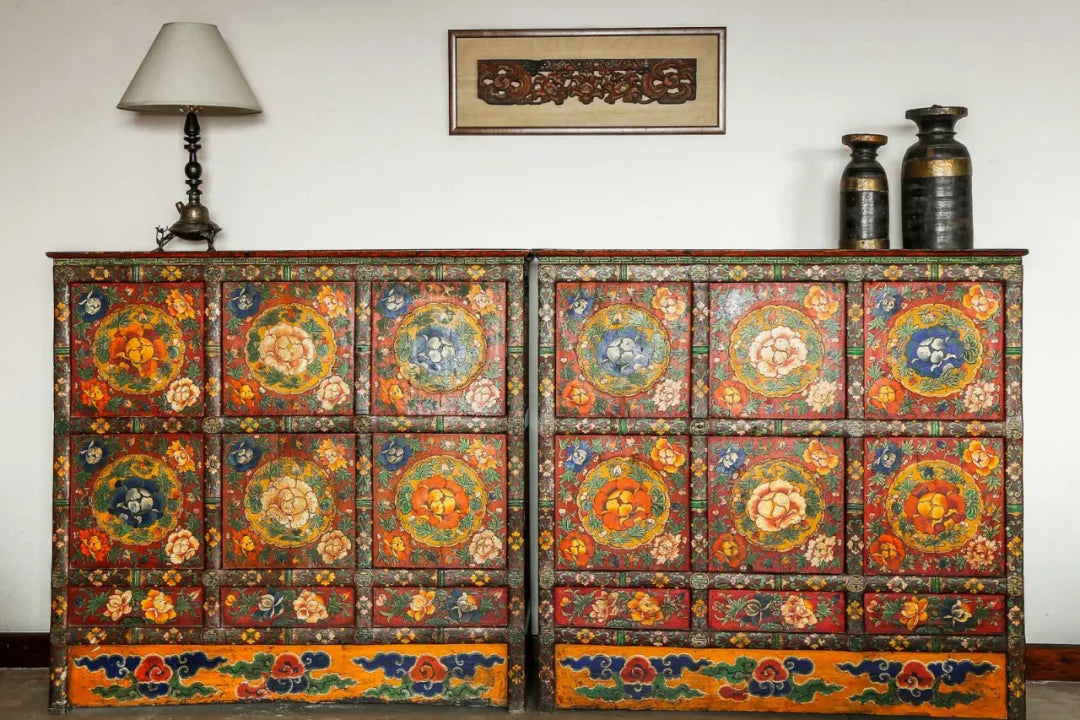
Snowland Life: Do Tibetan people hide valuable items in cabinets?
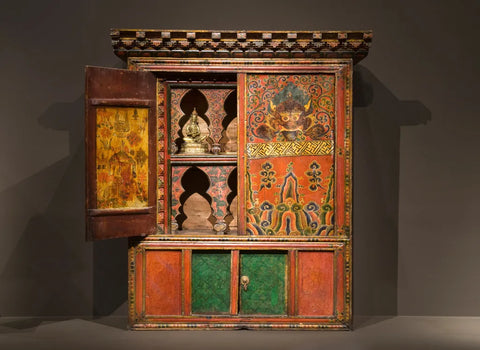
Photographer: Dawa Dazaba, original person
Editor: original person
Some images sourced from the internet
Most older generation Tibetans have not been exposed to modern external methods of organizing. This is not a sign of backwardness, but rather a reflection of their different values towards material possessions, leading them to adopt a more laid-back, casual, and unpretentious approach to organizing, which can be described as a "Buddhist-style" of organizing.
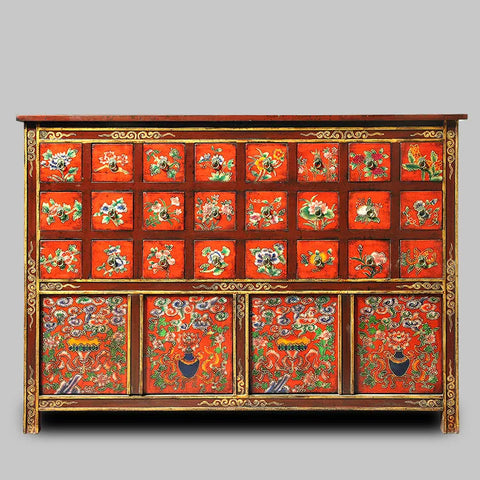
Tibetan-style storage in reverse
If it were modern designers, such as cabinets, bookshelves, drawers, and boxes, they would design as much, as large, and as suitable storage space as possible; but the Tibetan people are just the opposite. Traditional Tibetan desks, cabinets, and drawers typically have only half or even less than a third of the "usable" space designed. These pieces of furniture are large in size but have very little storage space.
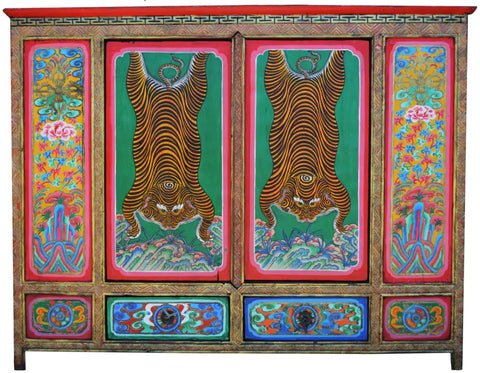
For example, a cabinet full of colorful paintings may appear to have dozens of drawer compartments and cabinet doors, but in reality, over half of them are "fake doors", or it may seem like there are three compartments in a cabinet, but only one door is actually designed, making it difficult to reach into the hidden corners and ultimately you don't even want to put anything in there.
In addition, in cabinets there will be two or three "hidden compartments" with a nail as a handle that can be pulled out as a whole piece of wood, but due to the small opening, it is difficult to store and clean inside the compartment.

The table is messy with items stacked disrespectfully.
Another characteristic of Tibetan storage is that the bottom of the furniture cannot have any gaps. For example, traditional Tibetan bed-chairs and tea sets are made up of four square solid wood tables placed side by side, with all four sides full and very substantial, representing abundance and completeness. Typically, there is only a small drawer that can be opened, and there is no lower shelf for storing books, newspapers, or miscellaneous items.

These furniture pieces do not have longer table legs like modern designs, which would make it easier to clean the bottom of the furniture and store small items. This may be because they believe the lower half of the body is unclean, and having items stored underneath would be disrespectful. Therefore, Tibetan scripture books, which represent faith and knowledge, should not be piled underneath. Rooms, bathrooms, or seats are typically not placed under the stairs, instead they might be used as small warehouses for cleaning supplies and miscellaneous items. It is also considered a taboo in Tibetan storage to have underbed storage cabinets, which are most popular in modern designs.
The importance of the size and shape of storage boxes is evident.
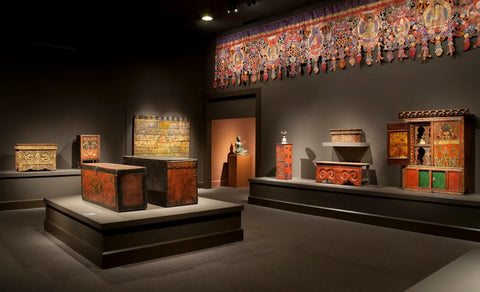 Image from LACMA / Museum Associates
Image from LACMA / Museum Associates
Surprisingly, the more exquisite boxes have various uses, with the most precious ones often used as "treasure boxes." According to Tibetan Buddhist customs, they are used as "wealth treasures" containing many treasure vases and consecrated items. They are changed and rituals and prayers are performed once a year. These boxes are typically used to store Buddhist consecrated items or valuable jewelry, rather than personal belongings.
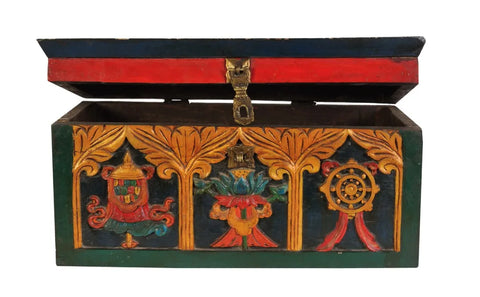
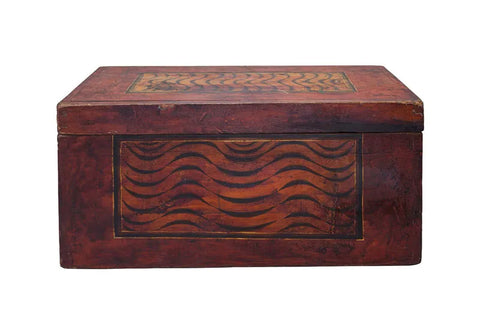
Despite the stacked warehouse space
In terms of architectural space, in rural areas, the first floor of Tibetan houses is usually used as a woodshed, cowshed, or stable, while the living spaces are located on the second floor and above. Due to the need to keep guest areas such as temples, living rooms, and kitchens free of clutter, they design small storage rooms to store food, grain, and goods. Essentially, other miscellaneous items are haphazardly stored inside these rooms and are not usually shown to guests.
In modern urban living, we categorize and evenly distribute items in different spaces, keeping them neatly arranged. For example, a living room may have bookshelves or various collectibles on display, giving the appearance of order amidst the abundance. However, in traditional Tibetan architectural spaces, items cannot be mixed, and items unrelated to entertaining guests must be stored in various storage rooms.
While they have many storage rooms, their classification method is somewhat different from urban dwellers. Their chaotic arrangement may seem disorganized to us, but they can easily locate their belongings. The elderly may stack Buddhist scriptures and books on top of each other on tables or shelves, similar to the display in a second-hand bookstore.
They typically do not feel sentimental about the damage or loss of everyday items, and may not even notice when a bowl goes missing. Their attention and sensitivity to small items are low, and they rarely exhibit obsessive-compulsive tendencies towards organization. Therefore, if you lend them a small item such as a book or a photograph, be prepared for the possibility of it being lost or not found.

Unveiling the Past and Present of Tibetan Style Storage
These Tibetan storage designs can be described as "anti-human" in the language of modern urban dwellers. Especially the cabinets and hidden compartments with minimal openings, I foolishly thought that these customs were to prevent thieves, for example, the windows in traditional Tibetan homes were very small, making it difficult for thieves to climb in from the outside. So, I assumed that the design of cabinets and hidden compartments served a similar purpose, right? Due to the small openings, it is impossible to see everything inside at a glance, and one must spend a lot of time rummaging through them. But I was wrong! They do not actually hide valuables in these places.
So where do they hide their valuables? I interviewed a septuagenarian named "Lozang Pengcuo" from Maixuzuosha in Dege County, Sichuan Province, and he said that six or seven decades ago in Tibetan areas, life in the highland agricultural and pastoral areas was very simple, so there was no need to hide valuables in boxes at ordinary times. Even gold and silver jewelry used for singing and dancing were simply hung in bedrooms or living rooms.
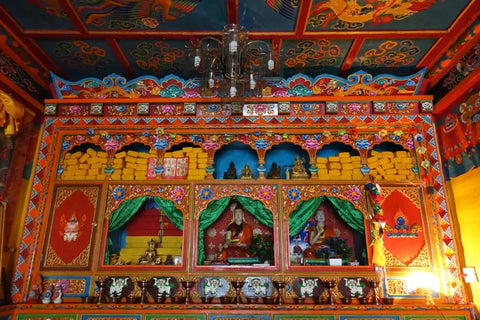
Due to the small community circles in the village, the thieves in the hometown also have nowhere to hide, and with the Buddha statues, Thangka, and other blessed items as their reliance, they prefer to offer them to the temple for worship rather than keeping them privately, as it brings more merits to everyone. Therefore, they would rather donate valuable items to the temple, as it eliminates the worry of losing them and allows more devotees to receive blessings.
The old man also mentioned that during chaotic times, Tibetans would help hide their own or the temple's valuable items such as Buddha statues in the mountains, under the earth, among rocks, or in the gaps of wooden boards and earth walls at home, and then selflessly return them to the temple when the situation calmed down. This reflects a completely different moral and values system from the outside world. However, this kind of kind-hearted behavior is slowly disappearing as the new generation of Tibetans have developed different values.
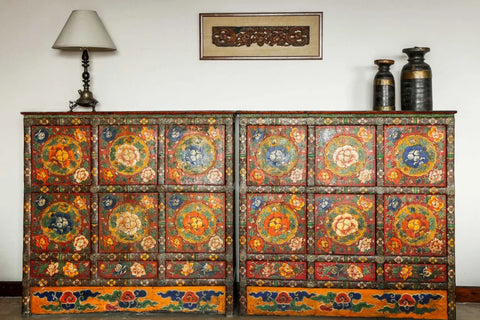
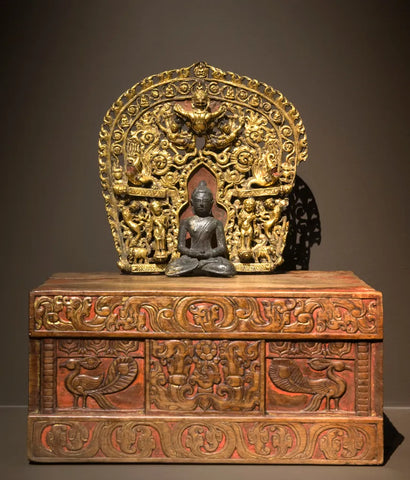
Image from LACMA / Museum Associates
No excessive packaging, no need for excessive storage.
Actually, even decades ago, before the transportation in the Tibetan region was opened to the outside world, they didn't have many industrial goods. The only items they needed for their daily life were pots and pans, barley flour, butter, clothes, jewelry, books, Buddha statues, etc. There were very few small items and miscellaneous items, and there were no industrial plastic products or over-packaged outer boxes.
For this reason, it is also understandable why there is so little storage space in their cupboards and furniture, because there really isn't much to store. Especially in the pastoral areas, only the essentials follow the black tents, like sunlight, air, water, including the Tangka and Buddha statues embodying their faith.
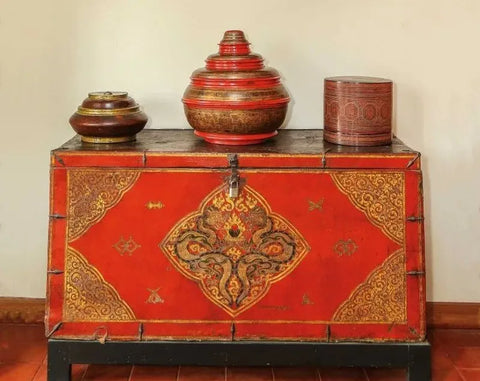
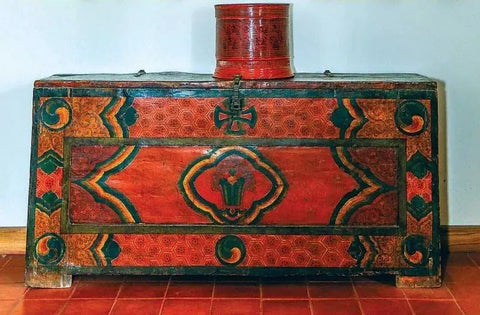
Today, with the progress and openness of society, modern equipment and technology are gradually being introduced into Tibetan areas. Although they are also starting to customize modern large bookshelves, wardrobes, computer desks, etc., with large storage space, the older generation of Tibetans still prefer traditional Tibetan-style furniture.
Perhaps this is the ascetic storage philosophy of the older generation of Tibetans - emptiness is abundance. Their ascetic style is not like us, only putting a minimalistic table or small cabinet in the living room, giving a feeling of detachment and emptiness in the home. Instead, they choose to fill the space with various luxurious large painted furniture, showing a sense of wealth but deliberately using impractical storage designs to make it difficult for you to hide things.
So, do these Tibetan-style furniture really help reduce the desire to accumulate belongings? And those exquisite painted Tibetan-style boxes or chests, will only make you carefully choose which most precious items to put in, just thinking about it... perhaps it is time to understand something?
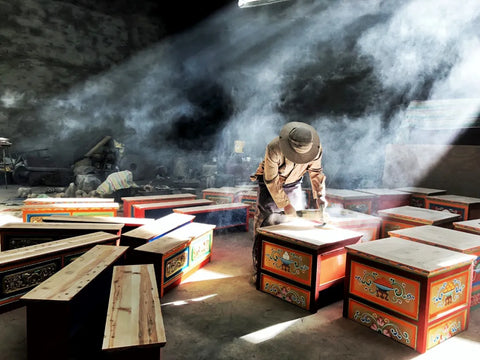
"Emptiness is abundance"

